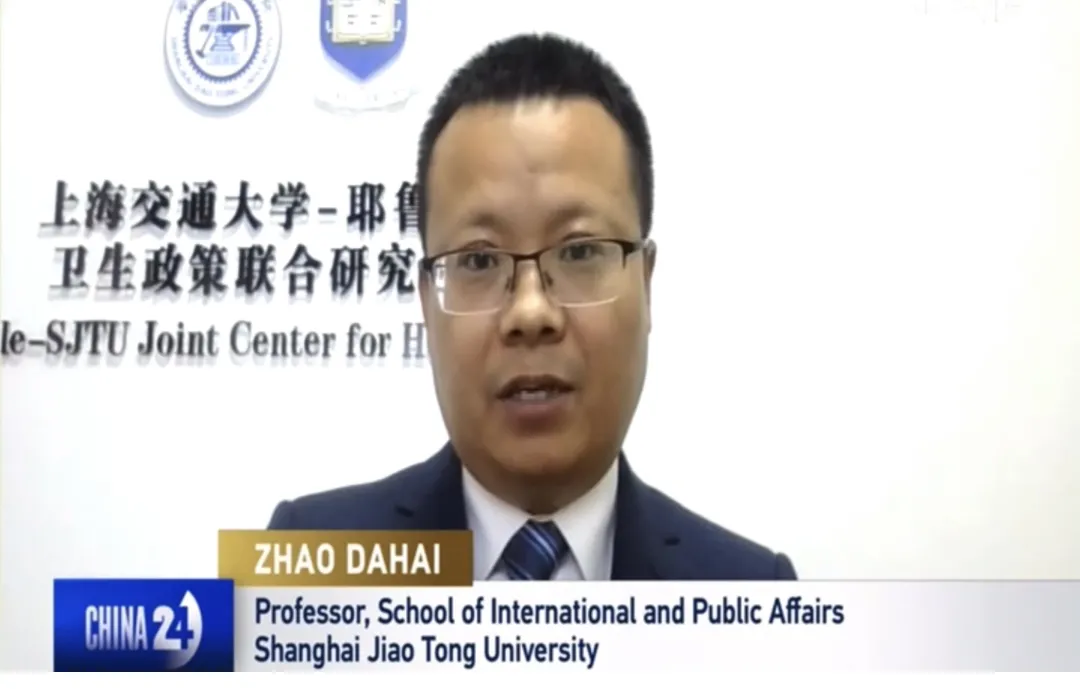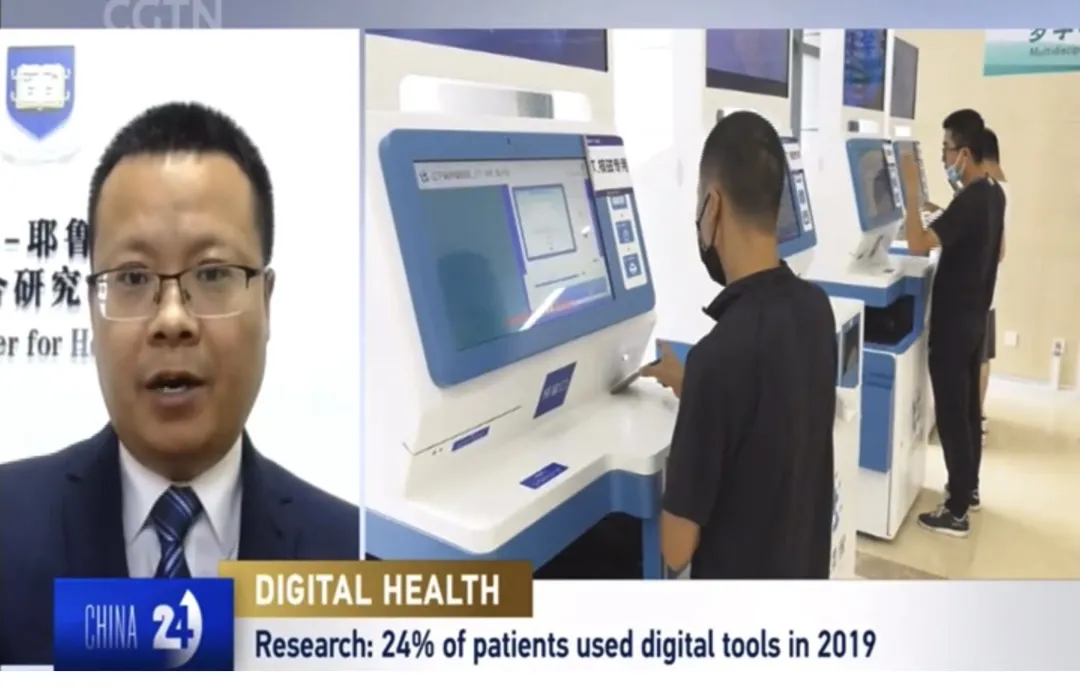上海交大赵大海教授接受央视专访:新冠疫情改变了数字健康产业发展方向

上海交通大学国际与公共事务学院教授、博士生导师,上海交通大学-耶鲁大学卫生政策联合研究中心执行主任赵大海,自新冠肺炎疫情暴发以来,对于新冠疫情暴发、防控以及卫生政策第60次接受中央电视台专访,也是第102次接受央视、上视专访。2021年9月6日,赵大海在中央电视台英语频道《中国24小时》节目,就正在举行的中国国际服务贸易交易会有关数字健康产业的相关话题进行了解释和评论。现将专访内容翻译并摘录如下。
主持人王茫茫:在刚才的报道当中,我们讨论了数字健康行业的数字变化。现在,请与我们谈谈这场新冠疫情是如何改变了中国数字健康产业的发展方向。
赵大海:我相信新冠疫情在客观上推动了数字健康产业的发展。数字健康发展的方向已经从传统治疗方法的效率提升部分转移到远程医疗、互联网医院和在线诊疗等。此外,应用相关工具预防传染病和慢性病也是另一个方向。我以远程医疗来举一个例子。虽然远程医疗在中国的大多数医院都已很普遍,但新冠疫情使得远程医疗更加普及和必要。与此同时,新冠疫情对远程医疗提出了更高的要求。传统的远程医疗只能实现单向的音视频通信,信息不能充分共享,远程交互与合作受到严重限制。新的和未来的远程医疗将解决这些弊端,实现真正的远程医疗,即无论医生身处何地,都能让医生完全感觉到患者就在自己眼前,和身体面对面的诊疗没有区别。

主持人王茫茫:您能举一些最新的数字医疗工具的例子来说明数字医疗工具已经帮助改善了中国的医疗卫生系统吗?
赵大海:在本次国际服务贸易交易会期间,许多新的数字健康工具被展出。事实上,其中一些已经在中国的医院使用。新的数字医疗工具已经提高了医疗部门的质量和效率。例如,在本次国际交易会上展出一款名为“活动能力测试一体机”的数字健康工具。体验者不需要携带任何设备,只需要在设备前步行6米,借助3D传感器技术,该机器就可以为用户捕捉行走姿势并打分。通过扫描条形码,机器将详细报告发送到用户的手机上。报告记录了体验者的行走速度、步幅、提足角度和膝关节扭转角度等。这台机器已经在中国的许多康复中心和疗养院等得以应用,并大大提升了医疗卫生机构对有行走问题患者的检查效率。
供稿者:国务学院
日期:2021年9月7日
Dahai ZHAO’s Exclusive Interview with CGTN: COVID sparks positive change in digital health industry
Dahai Zhao, a doctoral supervisor at the School of International and Public Affairs of Shanghai Jiao Tong University and Executive Director of Shanghai Jiao Tong University-Yale University Joint Research Center for Health Policy, has been interviewed by CGYN for the 60st time (the 102st time by CGTN / ShanghaiTV) since the COVID-19 pandemic. On September 7, Zhao commented on the ongoing 2021 China International Fair for Trade in Services (CIFTIS) and the digital health industries on “China 24” of CGTN.
Anchor: In our previous report, we discussed digital health industry changes in figures. Now, talk to us about how the pandemic has changed the direction of China's digital health sector.
ZHAO: I believe the pandemic of COVID-19 has pushed the development of digital health industry. The direction of digital health development is to dramatically improve the quality and efficiency of medicine and public health. In addition, prevention of infectious and chronic diseases is also the direction. Although lots of fields of digital health industry have been dramatically influenced, I just talk one example, that is, the telemedicine. Telemedicine is pretty common in most hospitals in China; the pandemic makes telemedicine much more popular and necessary. Furthermore, the pandemic has raised much more requirements for telemedicine. The traditional telemedicine can only realize one-way audio and video communication, information can not be fully shared, remote interaction and cooperation are seriously limited, the new and future telemedicine will solve the disadvantages and realize the real telemedicine.
Anchor: What have been some of the latest digital health tools that have helped improve China's health-care sector?
ZHAO: During this International Fair for Trade in Services, many new digital medical services are exhibited. Actually, some of them have been utilized in hospitals in China. I believe the new digital medical service will improve the medical quality and efficiency. For example, one digital medical service named all-in-one machine for Activity ability testing was exhibited on this International Fair for Trade. People who do not need to carry any equipment walk for 6 meters, the machine can capture the walking posture and score for the user with the help of 3D sensor technology. By scanning the barcode, a detailed report is sent to user’s mobile phone. The report records the walking speed, stride, foot lifting angle and the angle of knee joint torsion. This machine has dramatically promoted the efficiency of testing people who have problems on walking. In addition, this kind of machine has been utilized in some health centers or nursing homes in China.
Contributor: SIPA, SJTU
Date: September 7, 2021

